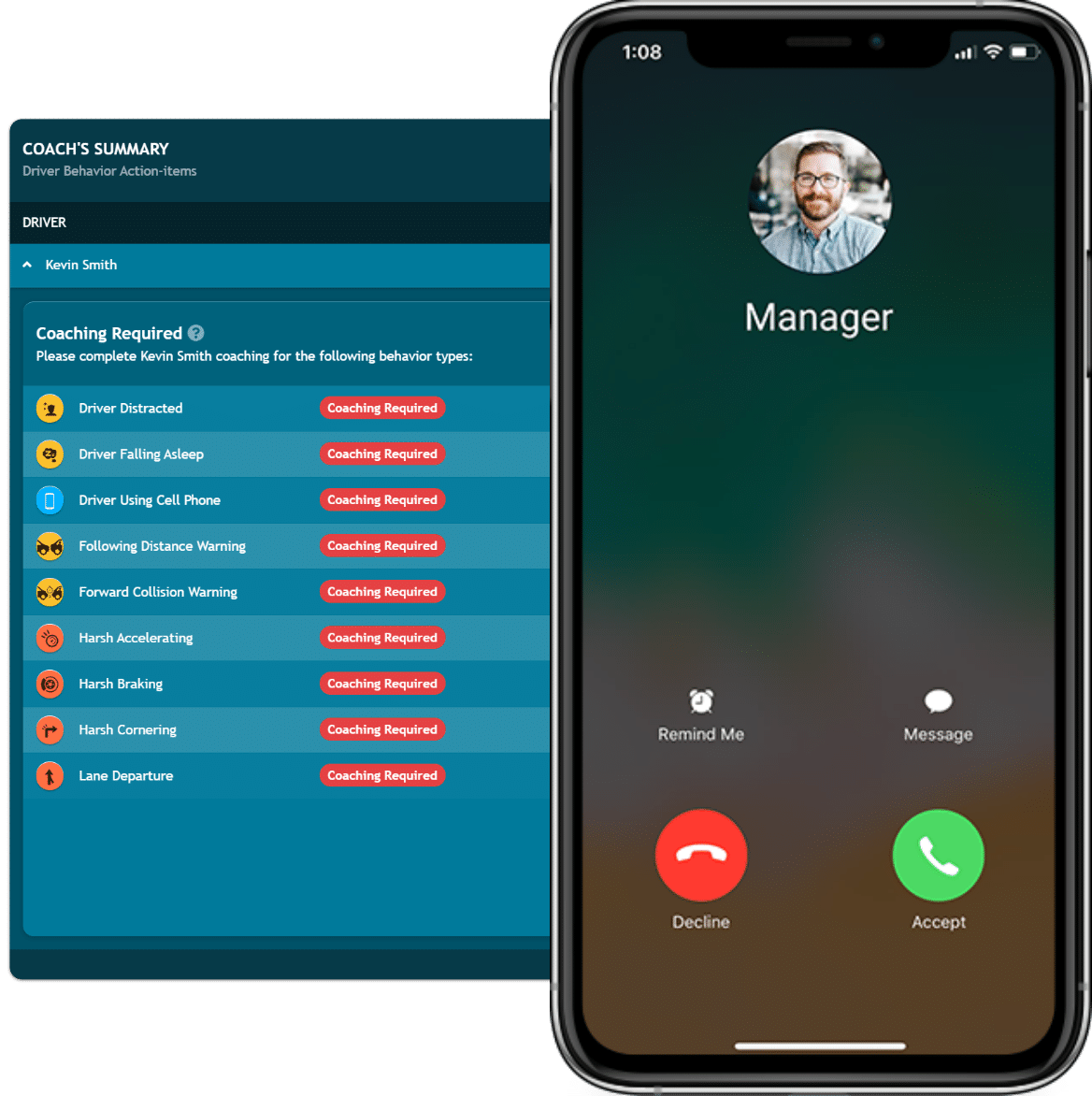The Passive Coaching System
- Have Your Cake and Eat it Too -
Get all the benefits of driver coaching and avoid the hassle. Our passive driver coaching system reduces unwanted behavior by training the drivers' intuitions and empowering them to coach themselves, while offering an escalation path that keeps managers informed and in control.

In-Cab Alerts
Automatic notifications tell the driver to stop the behavior in real-time.

Self-Coaching
Drivers coach themselves by seeing and acknowledging their events.

Training Courses
Training courses increase safety awareness and improve driving habits.

Escalation to Supervisor
Active intervention by a coach is reserved for the toughest cases.


















